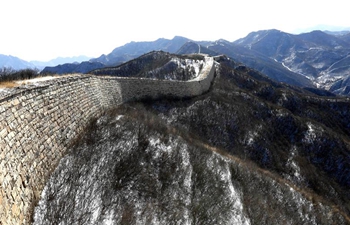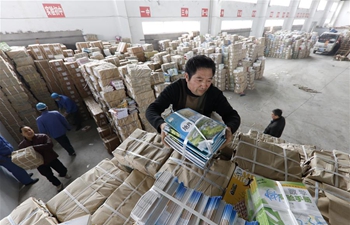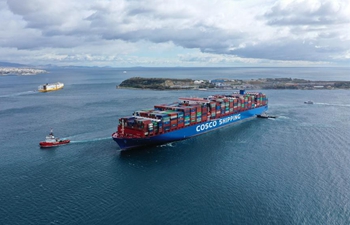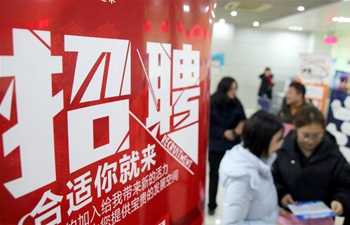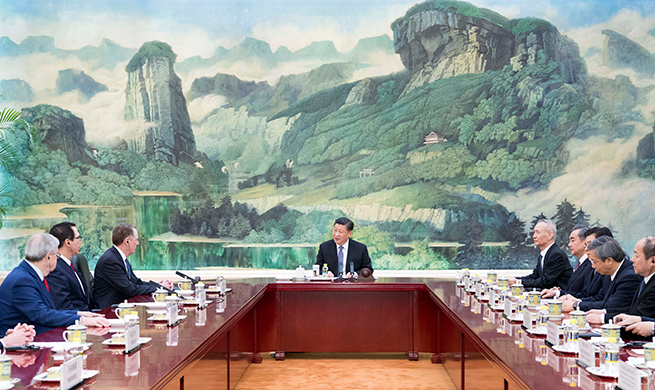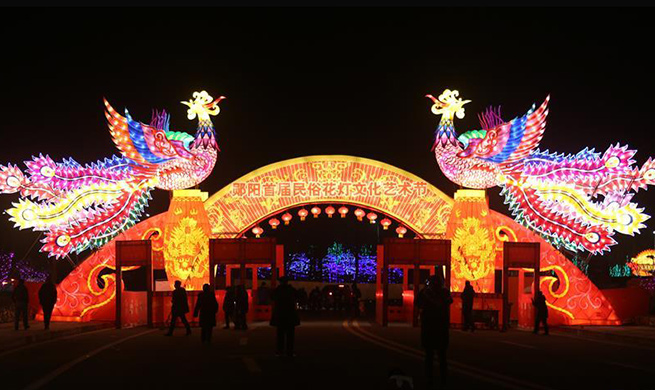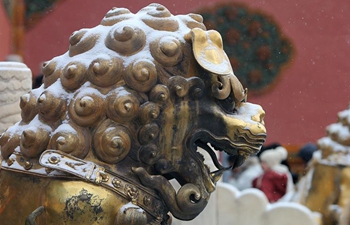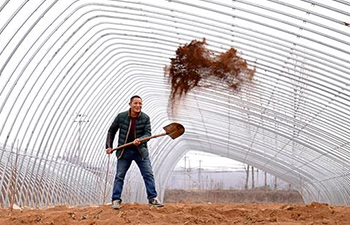BEIJING, Feb. 16 (Xinhua) -- The China-proposed Belt and Road Initiative (BRI) helps promote win-win cooperation worldwide, according to research papers and articles by some renowned international think tanks lately.
Put forward by China in 2013, the initiative is aimed at building a trade and infrastructure network connecting Asia with Europe, Africa and beyond along the ancient trade routes of the Silk Road.
A BOOST TO GLOBAL TRADE
Merchandise trade between China and countries along the BRI totaled 1.3 trillion U.S. dollars in 2018, a year-on-year growth of 16.3 percent, China's Ministry of Commerce said in January.
A research report published by trade credit insurer Euler Hermes late last month says nations involved in the BRI will see higher trade volumes, even if they are yet to receive any direct investment from China.
The report estimates that the BRI resulted in 460 billion dollars worth of investments in the five years since its inception in 2013.
For China, this will mean 56 billion dollars in additional exports, while it will import an extra 61 billion dollars worth of goods from the 80 countries named in the official manifesto, the report says.
The report estimates that this will add 0.3 percent to global trade and 0.1 percent to global growth, at a time when fears are mounting about a slowdown across the world economy.
The BRI aims to build infrastructure in countries accounting for a combined 68 percent of the world's population and 36 percent of its GDP, said the Center for Global Development, a nonprofit U.S. think tank.
Mahamoud Islam, a senior economist at Euler Hermes in Hong Kong, said this is because of the effect of better connectivity and infrastructure along the Belt and Road routes, as well as better trade relations between China and the target markets.
Given that a huge part of the Belt and Road routes are domestic, international companies could expect to benefit from infrastructural improvements in China too, he said.
"It improves competitiveness. That's not surprising, you're building railroads, ports and airports, connecting countries," Islam said, adding that for China, the BRI is a way to push out excess capacity in industries such as coal and steel, internationalize its companies and help liberalize the yuan by lending in Chinese currency.
The BRI investment has continued this year. From Jan. 2 to Jan. 15, the value of new BRI projects was 4.5 billion dollars, according to the RWR Advisory Group, a Washington-based research house, with the highest proportion of this going to sub-Saharan Africa.
CONNECTIVITY BECOMES TRENDY
At a roundtable held by the Russian International Affairs Council in December, Assistant Professor Fabienne Bossuyt said Central Asia is a region that is basically landlocked and is suffering from its geographical location in terms of its trade with the rest of the world. By increasing connectivity, this region will definitely benefit economically, she said.
The very topic of connectivity became somewhat trendy since China came up with its BRI in 2013, Bossuyt said.
China is planning to spend enormously on the initiative. Other countries that are involved in the initiative have started to take the whole thing very seriously, she said.
Greg Earl, a member of the board of the Australia-ASEAN Council, said in a recent piece in The Interpreter that a survey by HSBC of global businesses in 34 countries which rely on connectivity to conduct their businesses across borders found they regard the BRI as having a huge impact.
A recent conference held by the CIMB ASEAN Research Institute, a prominent institution, concluded that the BRI "is important for ASEAN especially given the significant infrastructure needs in the region."
"(It) can leverage the existing close China-ASEAN economic relationship as a foundation for greater future collaboration in that China has been ASEAN's largest trading partner for close to 10 years," Earl cited the conclusion of the conference as saying.
The attitudes of the countries involved in the initiative have also gone through remarkable changes.
James Curran, a professor at the University of Sydney and non-resident fellow at the Lowy Institute, noted that while some politicians played domestic politics on China, the government and the opposition have stuck to pragmatism.
Japan's economic relations with China went through a dramatic turn since the country started to call for cooperation with China in third countries in the Belt and Road infrastructure drive in 2017. The two countries reached a bilateral agreement on cooperation in third countries in October 2018.
Japan's move is aligned with the Japanese Ministry of Economy, Trade and Industry's view that "participating in China's BRI offers a significant opportunity for Japan," wrote Aurelia George Mulgan, a professor at the University of New South Wales, Canberra.
FALSE ACCUSATIONS
A report last year from the Center for Global Development implied that countries are concerned about being stuck in a China debt trap, unable to repay loans and forced to cede assets such as commodities or infrastructure.
The fear was fanned by reports in December that Kenya may have to hand over control of its largest port of Mombasa, paid for by China, if it was unable to repay the debt. Kenyan President Uhuru Kenyatta denied the claims.
"China is sitting on the largest foreign exchange reserves of any country on Earth. When that money just sits in the central bank, they tend to get about a 3-percent return. So they have an incentive to make that excess liquidity work for them. Through debt and equity investments they are trying to reap better economic returns," said Bradley Parks, executive director of AidData, a research center at the College of William & Mary in Virginia.
U.S. foreign policy think tank Carnegie Endowment for International Peace said while several recipients of Chinese infrastructure and development loans face serious repayment problems often due to reckless and inexperienced practices on both sides, there is no conclusive evidence that China is intentionally seeking to drive countries into debt problems to gain control over their assets, policies, etc.
Proponents of the debt trap diplomacy argument generally base their conclusion on a single case -- Hambantota Port in Sri Lanka -- while ignoring the other tools China uses to deal with bilateral debt problems.
And even in that case, there is no publicly available information indicating that, when the Export-Import Bank of China made its first loan to Sri Lanka to support this project, the ultimate purpose was to help China gain a concession to develop and operate the port, the think tank said.





